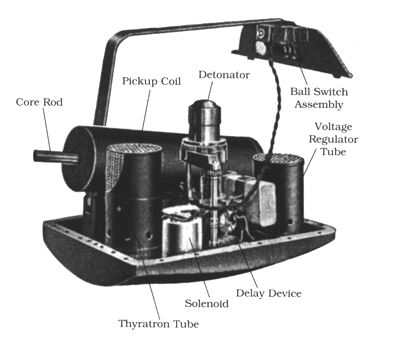Bad Torpedoes
by Fitz Walker
Today, A total Dud.... The University of Houston presents this series about the machines that make our civilization run, and the people whose ingenuity created them.
July 24th, 1943. World war II was in full swing and American submarine commander Lt. Dan Daspit had just found a juicy target. A huge Japanese tanker. The Tonan Maru, traveling slow in the water.
It was almost too good to be true.
Lt. Daspit launched four torpedoes at the helpless target. Thousands of pounds of explosives sped straight for the tanker but all four failed to explode on impact. Disappointed but determined, the submarine commander eventually fired a total of fifteen torpedoes at the enemy ship. Only two worked. Not enough to sink the enemy ship and a terrible success rate.
The submarine commander had launched all but one of his torpedoes. Saving that last one for analysis back home. What happened was not unique. Many other American submarines experienced the same horrible failure rate of their torpedoes.
Mark-14 torpedoes were supposed to be the best anti-ship weapon in the US navy. It used sensitive electronics that could detect changes in the earth's magnetic field to trigger an explosion. This does more damage than actually hitting the ship's hull before exploding.

Mark 14 torpedo side view and interior mechanisms.
Photo Credit: Wikimedia Commons.
But this new technology also made each torpedo very expensive. Too expensive to fully test during development in the 1930's depression. Money was tight before the war and any excuse to lower development costs were used. In fact, the new design was hardly tested at all.
To save money in testing, light-weight dummy warheads were used to allow the torpedoes to float when they ran out of gas. But when actual explosives were used in combat, the now heavy torpedoes ran too deep in the water. Deeper than the bottom of the target ships.
Then there was the trigger mechanism. The earth's magnetic field is not the same around the world - it actually changes depending on geographic location. So what worked in north American waters failed to work halfway around the world in the Pacific.

Mk6 mag exploder mechanism.
Photo Credit: Wikimedia Commons.
The mechanical trigger often didn't work as it simply bent on impact instead of exploding. It's been estimated that the Mark-14 torpedo had a 50 to 80% failure rate.
Navy bosses blamed the high failure rate on poor seamanship. Rear admiral Charles Lockwood challenged his leadership and ordered a series of tests to prove the weapons were indeed faulty. Lockwood's engineers performed real world testing of war production torpedoes. His team revealed many faults in the design. It was only then that the Navy agreed to fix the numerous problems. This turned the Mark-14 torpedo from a literal dud into a potent weapon that stayed in use into the the 1980s.
Men were sent into battle with weapons that were not fully tested in combat conditions. Systems need to be tested just like they will be used. Inadequate testing of complicated systems will often lead to big problems when most needed. A mistake often repeated throughout time.
I'm Fitz Walker for the University of Houston, and I too am interested in the way inventive minds work.
See the video - The Great Torpedo Scandal? Hype or not?: https://www.youtube.com/watch?v=Po5gkF6TaQg
This episode was first aired on May 31, 2022